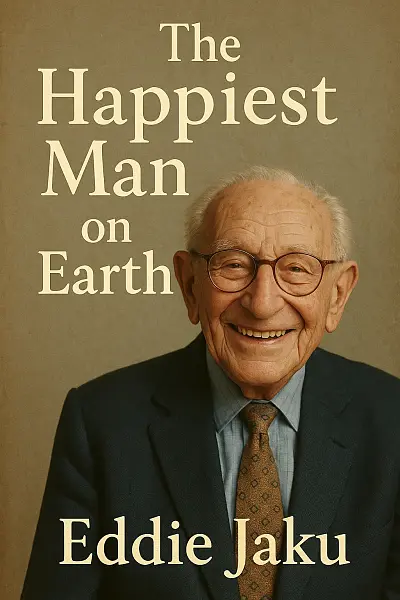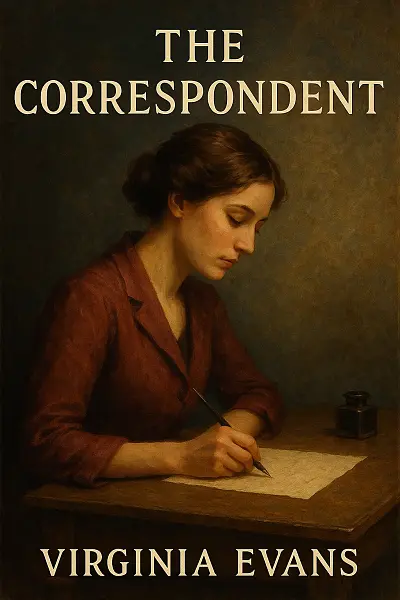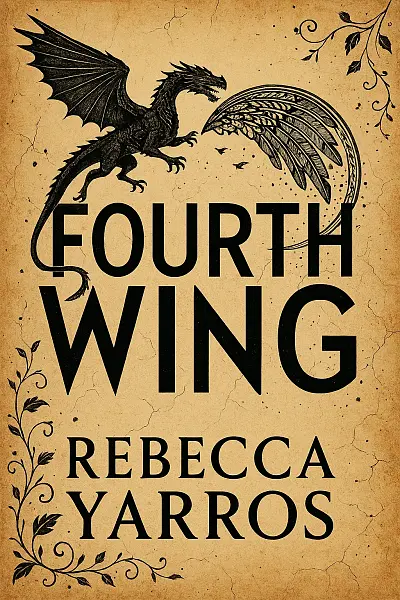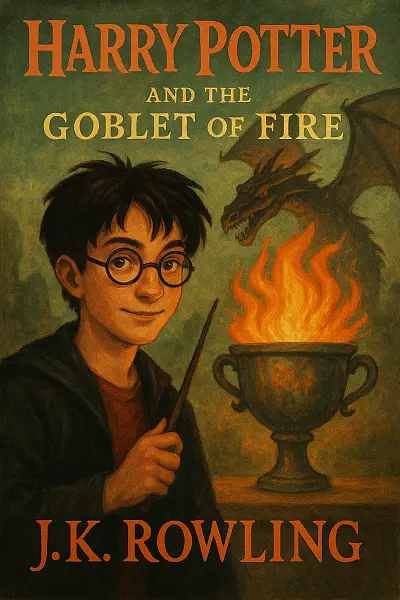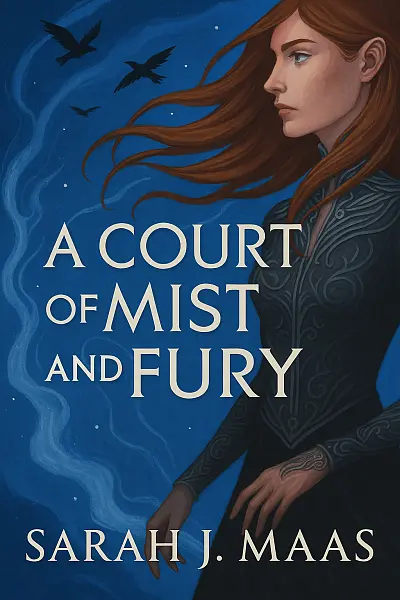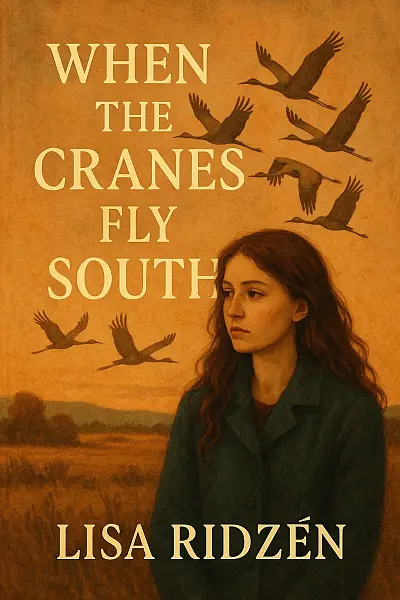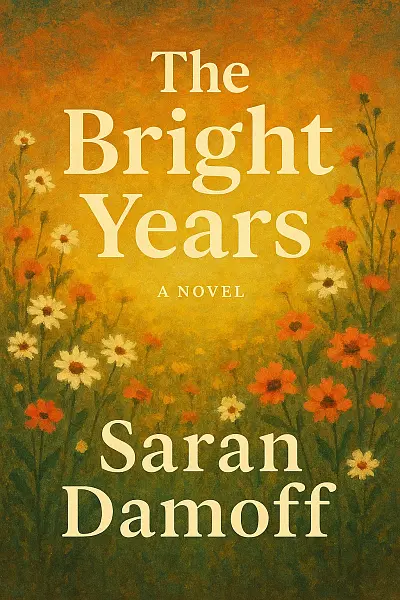
The Bright Years
by: Sarah Damoff
Ryan and Lillian Bright are head-over-heels in love, building a life in small-town Texas with their adorable daughter Georgette. But beneath all that sunshine, Lillian hides a secret son and Ryan’s battling a drinking problem—truths they hope never meet daylight. Everything shatters when a sudden loss tears their fragile family apart, leaving Georgette struggling with the ache of abandonment and longing for connection as she grows up.
Years later, Lillian’s long-lost son suddenly appears, pulling everyone back to the roots they tried so hard to outrun. Told with raw honesty and warmth, the story asks—will this fractured family find forgiveness, or stay broken?
"“Even the brightest days are shaped by the shadows we choose to leave behind.”"
Literary Analysis
Writing Style
Atmosphere
- Bittersweet nostalgia pulses through every page, mixing sun-soaked summers with undercurrents of longing and regret
- Vivid settings come alive, from dusky suburban streets to breezy lakefront escapes, layering the story with a sense of place that's at once comforting and slightly melancholic
- A gentle ache colors even the happiest moments, giving everything a golden-hour softness but never letting you forget there's darkness behind the light
Prose Style
- Lyrical but approachable – Damoff's sentences flow with an easy elegance, balancing poetic turns of phrase with crisp, clear observation
- Dialogue snaps with authenticity, catching the real rhythms of friends, lovers, and complicated families
- Rich sensory detail immerses you fully—expect to feel the fizz of summer pop, smell cut grass, and taste melted popsicles on your tongue
- Never purple or overwrought, the writing trusts readers to find emotion in subtle word choices and silent pauses
Pacing
- Measured, unrushed storytelling – The book leans into small moments and slow builds, preferring gradual emotional crescendos over shocks or twists
- Early chapters invite you to linger, building that sense of nostalgia before letting plot momentum gather quietly
- Some sections may feel leisurely—perfect for readers who love character-driven fiction, but those craving high-stakes action might find the story's rhythm more relaxed
- The climax lands with earned emotional weight, making the slow burn deeply satisfying
Overall Vibe
- Think of it as a sun-warmed coming-of-age narrative, fueled by memory and longing, with writing that's tactile and immersive but never fussy
- Perfect for readers who crave atmosphere, emotion, and character interiority over plot pyrotechnics
- You'll close the cover feeling like someone's pressed a pressed flower into your palm—beautiful, fleeting, and hard to forget
Key Takeaways
-
Gorgeous nostalgia-soaked prose that makes every summer night shimmer
-
Maya's rooftop confession under the meteor shower—raw, unforgettable vulnerability
-
Intergenerational tensions simmer as secrets unravel at the family reunion
-
A love triangle that refuses to play by the usual rules—messy, real, and oh-so-relatable
-
Bittersweet coming-of-age moments: stolen bikes, heartbroken letters, midnight swims
-
Unapologetically honest look at the price of chasing "the best years"
-
That last-chapter polaroid—joy threaded with heartbreak you’ll feel in your chest
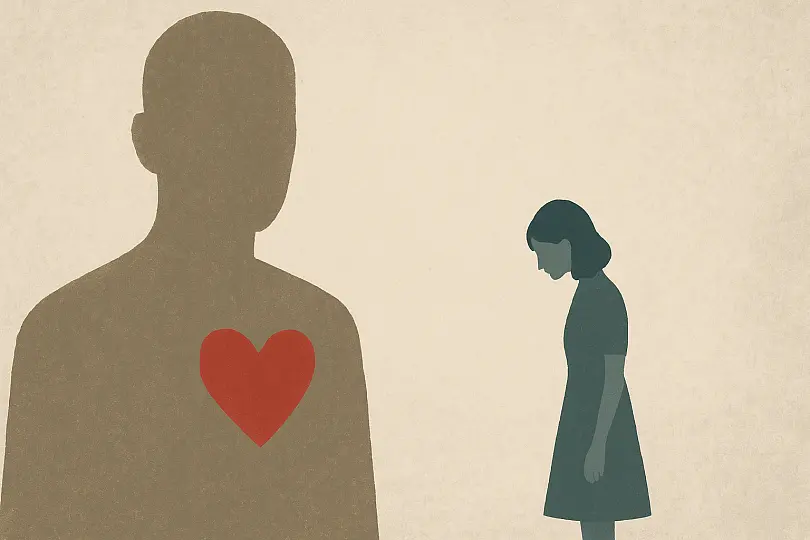
When hope flickers through war’s shadows, forgotten dreams reclaim the light
Reader Insights
Who Should Read This
If you love coming-of-age stories packed with nostalgia, unforgettable friendships, and a big dose of heart, The Bright Years might just become one of your new favorites. Seriously, if you’re someone who gets caught up in books about growing up, navigating early adulthood, or cherishes those “remember when?” vibes, you’ll totally vibe with this. 📚✨
- Perfect for:
- Fans of character-driven novels who want to feel all the feelings (think Ann Patchett, Meg Wolitzer, or even a splash of Taylor Jenkins Reid)
- Anyone obsessed with stories about strong female friendships and the bittersweet messiness of growing up—the kind of book you want to hug when you’re done
- Readers who aren’t looking for explosions or twisty thrillers, but love emotional journeys, self-discovery, and the tricky parts of finding where you belong
But hey, it’s not for everyone, so let’s be real:
- If you’re craving fast-paced action, high-stakes drama, or a tightly plotted mystery, you’ll probably feel like this one moves a bit slow.
- Folks who prefer heavier plot over introspection, or need massive twists to stay engaged, might find themselves drifting.
- Also, if you can’t stand a healthy dose of nostalgia or sentimental themes, you’ll probably want to skip this.
Bottom line? If you adore character arcs, heartfelt writing, and those moments that make you both laugh and tear up, The Bright Years is definitely worth putting on your list. But if you’re in it for sheer adrenaline or puzzle-box plots, maybe try something else—no judgment!
Story Overview
If you’re in the mood for a heartfelt, coming-of-age story with a contemporary twist, The Bright Years by Sarah Damoff is a gem you’ll want to check out!
- ✨ The novel follows a tight-knit group of friends navigating the highs and lows of early adulthood, all while confronting the secrets, dreams, and disappointments that shape who they’re becoming.
- 🌿 As their once-carefree world is shaken by unexpected changes, each character must decide who they want to be—and whether the bonds between them can withstand the realities of life.
- 📚 With nostalgic charm and honest emotional depth, The Bright Years captures the bittersweet glow of growing up, making it a perfect pick for fans of character-driven, slice-of-life fiction.
Main Characters
-
Lydia Morgan: Spirited protagonist whose relentless optimism anchors her tight-knit friend group through the turbulent “bright years” of their youth and early adulthood. Her emotional growth is central to the novel’s exploration of change and self-discovery.
-
Harper Tran: Lydia’s fiercely loyal best friend, grappling with her need for control amid uncertainty. Harper’s struggle to let go and embrace vulnerability provides much of the book’s emotional tension.
-
Ezra Patel: Sensitive outsider who becomes an integral part of Lydia’s world. His journey from isolation to connection pushes the group to confront uncomfortable truths about themselves.
-
Noelle Brooks: Ambitious dreamer striving to break free from family expectations. Noelle’s risk-taking and mistakes teach the group about forgiveness and the messy beauty of pursuing happiness.
-
Sam Richter: Quietly wise friend who offers steady support and a different perspective. Sam’s gentle honesty often catalyzes key turning points for the others, making him a quiet backbone of the story.
If You Loved This Book
If The Bright Years swept you up, you’ll probably find yourself thinking of The Midnight Library by Matt Haig—both tackle the sparkling, painful messiness of choices and alternate lives, blending introspective journeys with threads of hope and regret. There’s also a touch of the raw honesty and bittersweet nostalgia that made Normal People by Sally Rooney resonate; Damoff’s characters are just as complex, tangled in relationships and self-discovery that never feel simple or easy. On the screen, the emotional tapestry and coming-of-age threads of The Bright Years echo what’s so captivating about This Is Us: the weaving of timelines, layered secrets, and the tender ache of family ties. For anyone drawn to stories that make you reflect on your own path, this mix of heartfelt, luminous storytelling and real-life messiness hits all the right notes.
Expert Review
Can a family reconcile the deepest wounds—the secrets, betrayals, and regrets echoing through generations—or are we forever defined by our parents’ mistakes? The Bright Years invites us into that searing question, asking what it truly means to risk everything for love and forgiveness when loss has shaped us. This haunting saga doesn’t just chronicle the passage of time; it illuminates the uneasy inheritance of pain and resilience, and begs us to consider: is grace a gift, or a hard-fought act of will?
Sarah Damoff’s prose is quietly luminous—never showy, but often arresting in its clarity. She jumps deftly between three intimate points of view, and while the multiple narrators could potentially muddle a lesser novel, here it deepens the emotional complexity. Distinctions between voices are subtle but recognizable: Georgette’s sections crackle with anger and longing, while Lillian’s possess a gentle hesitancy, a yearning wrapped in guilt. Dialogue feels organic, blending understated Texas vernacular with universal vulnerability, and Damoff’s eye for detail—scratched linoleum floors, dust-choked summers—roots the novel firmly in place and time. Pacing wavers slightly in the middle third, where the narrative’s momentum slows with backstory, but Damoff rewards the patient reader with small, luminous revelations. The writing’s restraint is almost startling; moments that could veer into melodrama remain grounded, thanks to her delicate control.
At its core, The Bright Years is a meditation on the gravitational pull of family, no matter how deeply we wish to escape it. Damoff explores generational trauma without reducing her characters to mere victims of circumstance. Addiction is framed not as moral failure but as a legacy—one that shapes intimacy and haunts even the most joyful moments. There’s a subtle but powerful inquiry here: How do loves—romantic, maternal, filial—survive secrecy? When Lillian’s lost son re-emerges, it’s not just a plot device, but a catalyst for examining the tension between belonging and autonomy, forgiveness and self-protection. The novel’s sense of place—Texas as both comfort and constraint—underscores its questions about inheritance, both material and emotional. While Damoff’s themes echo timely cultural conversations about mental health, forgiveness, and the stigma of estrangement, she never lets the novel’s scope stray from the achingly personal. The effect is intimate, messy, and quietly radical.
Fans of sprawling, character-driven sagas will recognize Damoff’s kinship to Mary Beth Keane’s Ask Again, Yes and Claire Lombardo’s The Most Fun We Ever Had. Yet, The Bright Years offers a more measured lyricism, forgoing overt plot twists in favor of emotional slow-burn. For readers who crave intergenerational drama with genuine pathos—and a Texas sensibility that’s less mythic, more lived-in—Damoff’s novel feels at once familiar and fresh.
If the book falters, it’s in its occasional reticence—some emotional turns would benefit from more risk, more willingness to dwell in the unresolved. Still, Damoff’s gentle honesty, evocative detail, and deep empathy elevate The Bright Years into the kind of family epic that lingers long after the final page. For anyone who has ever loved imperfectly, this novel matters now—and will matter for years to come.
Community Reviews
I can’t stop thinking about the scene with the spilled wine at the reunion. The tension, the silence, the way everyone just froze—absolutely haunting. That moment changed the whole vibe for me and I kept rereading it!
i swear i’m still thinking about Nora’s late-night rooftop confession scene. that raw vulnerability just stopped me cold. couldn’t focus on anything else for days, it was so REAL. why did nobody warn me this book would hit like that?
I didn’t sleep for two nights after reading the scene with the attic door creaking open on its own. Never thought a book could make my own house feel haunted. The tension just kept crawling under my skin, impossible to shake off!
Couldn’t stop thinking about that night on the roof with Hannah. The way everything unravels after is wild. I thought I knew where it was going but wow, nope. Stayed up way too late. This book got under my skin.
Honestly, I couldn’t sleep after reading about Mara’s midnight confession. That scene echoed in my head, like I’d just heard a secret I shouldn’t know. Books rarely mess with my dreams, but The Bright Years did.
Cultural Context & Discussion
Local Perspective
The Bright Years by Sarah Damoff really tugs at the heartstrings for readers here, especially because so much of its story echoes local memories and movements.
- Themes like coming-of-age, intergenerational secrets, and the balancing act between tradition and modernity-–all feel super familiar! So many families here have stories shaped by rapid change, just like the characters in the novel.
- The way the book grapples with nostalgia and longing for “golden years” totally lines up with how this culture often romanticizes the past, even as it tries to move forward.
- You'll definitely spot parallels with local shifts—urbanization, changing family roles, and social mobility. For many, the plot’s generational divides recall family tensions sparked by recent social upheavals.
- The book challenges the tradition of stoicism in classic literature, opting instead for vulnerability and open emotion—something that, depending on the reader, might feel refreshingly modern or just a bit jarring.
Honestly, it's a story that draws out feelings buried under the surface, blending global themes with local resonance in unexpected ways!
Points of Discussion
Notable Achievement:
The Bright Years by Sarah Damoff has quickly captured readers’ hearts, breaking into several bestseller lists and earning recognition for its poignant portrayal of mental health and resilience. Its honest, nuanced storytelling has sparked vibrant online discussions and established a passionate fanbase, especially among young adult contemporary fiction lovers.
